The next leg of our trip started from home, after a few days of errands and restocking, heading to Bellingham Washington. Knowing that we had exactly two weeks to get to the Alaska Marine Highway Ferry, we purposely left without stop by stop plans, thinking to drive as far as possible allowing maximum birding time in Oregon and Washington. And we hoped that our start was not auspicious… with Google Driving Directions set for Oregon as the general path, Chuck’s co-pilot (me), started researching what birds could be expected for possible future stops. I failed to notice that I had turned the directions off until Chuck exclaimed that we were making our second circle around Dothan, GA! For some reason I found this so hilarious that I could barely stop laughing to get us back on track. Having to be behind the wheel for that much longer, Chuck was not as amused.
We drove with little more than pit stops from Crawfordville, FL to Pueblo, CO, some 1600 miles in 31 hours, and with gas mileage of 30.3! Camping was a dramatic transition from a beach view in South Florida which required sleeping with fans, to sleeping under flannel sheets and heavy covers with a snowcapped mountain view of Colorado.
We hopped back on the road for another 900 miles, to camp at the Bruneau Dunes State Park. I picked this site because I couldn’t resist the idea of seeing sand dunes in Idaho! 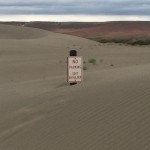
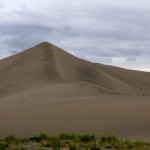 What a unique place, where the tallest sand dune in in North America was formed from sandy sediments of the Snake River, regular high winds, with all of it feeding into a natural trap for the sand. As you can see, the sands continue to shift.
What a unique place, where the tallest sand dune in in North America was formed from sandy sediments of the Snake River, regular high winds, with all of it feeding into a natural trap for the sand. As you can see, the sands continue to shift.
The dark colored dunes around the lake reminded us of an Ansel Adams photograph but instead of black and white, it was a study of browns and tans. We added two new birds here, the California Quail and the Bullocks Oriole.
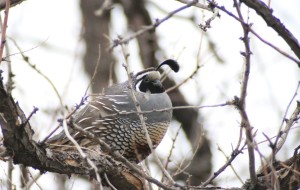
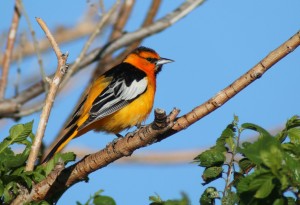
When our kids were young, they had a computer game called Oregon Trail where players were provided a budget to prepare for a covered wagon trip west to Oregon by choosing the best timing, route, food, and equipment. Our kids would probably tell you that I loved playing that game more than they did, and I felt that in some small way the game was coming to life as we traveled in our “covered Sprinter Van”, on a route timed for birds, hoping that we packed the right food and equipment for our trip to Oregon followed by Washington, Alaska, Newfoundland, Maine, and North Carolina before returning home again in mid-August.
Most of our time in Oregon was spent in Ponderosa Pines (a fire dependent forest system) near the communities of Sisters and Indian Ford both of which are located inside the Willamette National Forest, as well as in the Temperate  Rainforest at Fort Stevens State Park. Chuck noted that private forest lands were severely over harvested so that all are now all less than 30 years old. It was easy to see for ourselves why there was such an uproar when land managers attempted to heavily harvest public forests in the same manner. Chuck saw that the Willamette National Forest looked well thinned and burned in the Sisters area, but that Indian Ford had much denser underbrush and was concerned whether they are using enough fire to protect the forest.
Rainforest at Fort Stevens State Park. Chuck noted that private forest lands were severely over harvested so that all are now all less than 30 years old. It was easy to see for ourselves why there was such an uproar when land managers attempted to heavily harvest public forests in the same manner. Chuck saw that the Willamette National Forest looked well thinned and burned in the Sisters area, but that Indian Ford had much denser underbrush and was concerned whether they are using enough fire to protect the forest. 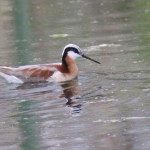
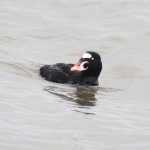 Even the State of Oregon forests seemed more harvested than the National Forest and State Park lands. Along the coast, we found 7 new species, including Pelagic Cormorant, the Red-necked Phalarope, and a raft of over 100 Surf Scoters.
Even the State of Oregon forests seemed more harvested than the National Forest and State Park lands. Along the coast, we found 7 new species, including Pelagic Cormorant, the Red-necked Phalarope, and a raft of over 100 Surf Scoters.
While birding in Oregon, we felt that we were struggling just to see birds, although in hindsight we did see a total of 14 new species, but we believe that three factors contributed to our increased feeling of difficulty. First, we were past most of the migration period of easy pickings. Second, the light seemed so different- inside the forest canopy it was as if we were birding at dusk at any time of the day. And third, the forests are denser than we had experienced to date so that we could rarely see the outline of a bird against the sky. Entering the forests in this area was like walking into a hushed and darkened moss covered cathedral. We experienced the silence by more than just our ears, we could see the muted softening of color, feel the moisture and cushioning moss under foot, taste pine in the air, and could stop and smell the delicate scent of Sitka Roses.
WASHINGTON. Here was our true example of temperate rain forests with what we believed was the most striking spot in Washington, the Olympic National Park’s Quinault Valley of the Rain Forest Giants. 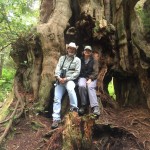 This valley is the home of the “World’s Largest Spruce, Western Red Cedar, Douglas Fir & Mountain Hemlock. Also the United States’ largest Yellow Cedar & Western Hemlock”. . The enormity of the trees is was a wonder to see.
This valley is the home of the “World’s Largest Spruce, Western Red Cedar, Douglas Fir & Mountain Hemlock. Also the United States’ largest Yellow Cedar & Western Hemlock”. . The enormity of the trees is was a wonder to see.
The balance of our birding stops in Washington were targeted for specific birds, and included Port Angeles, where we stayed in a wonderful campground with three deer foraging at the edge of our campsite, 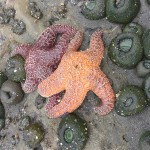 and at Grays Harbor Beach where we took time to explore tide pools full of starfish and watch wales surface just past the breaking waves.
and at Grays Harbor Beach where we took time to explore tide pools full of starfish and watch wales surface just past the breaking waves.
We added 22 new species in Washington starting with Cape Disappointment, where we added the Brandt’s Cormorant and the Pigeon Guillemot. 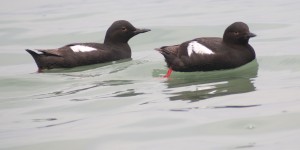
The Cascades National Park had a beautiful hike that started with a mountain overlook, down a well-built trail through a moss covered forest, with waterfalls along the way down to a pebble lined creek.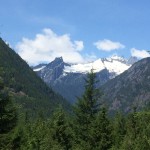
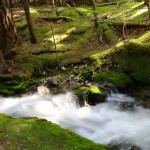
The Ocean Shores Jetty was fun but a challenging climb for older folk (us) in drizzly weather, and out on the slippery rocks we found Wandering Tattler, Parasitic Jaeger, and Common Murre. We were reminded that we had seen few marine mammals so far as we came upon a single 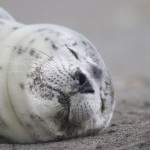 Sea Lion pup left on the beach by its mother; it is typical of the mothers to leave them during the day and then come back at night to feed the pups.
Sea Lion pup left on the beach by its mother; it is typical of the mothers to leave them during the day and then come back at night to feed the pups.
The Olympic Peninsula is yet another place we want to return to explore when we can spend more time. It was impressive to us, as Floridians, how little development Washington (and Oregon) had along their coastal shores; the beauty is there for all to enjoy as opposed to Florida beach development where in most areas it is near impossible to see the beach between condos and hotels.
Next stop… the Alaska Marine Highway Ferry!
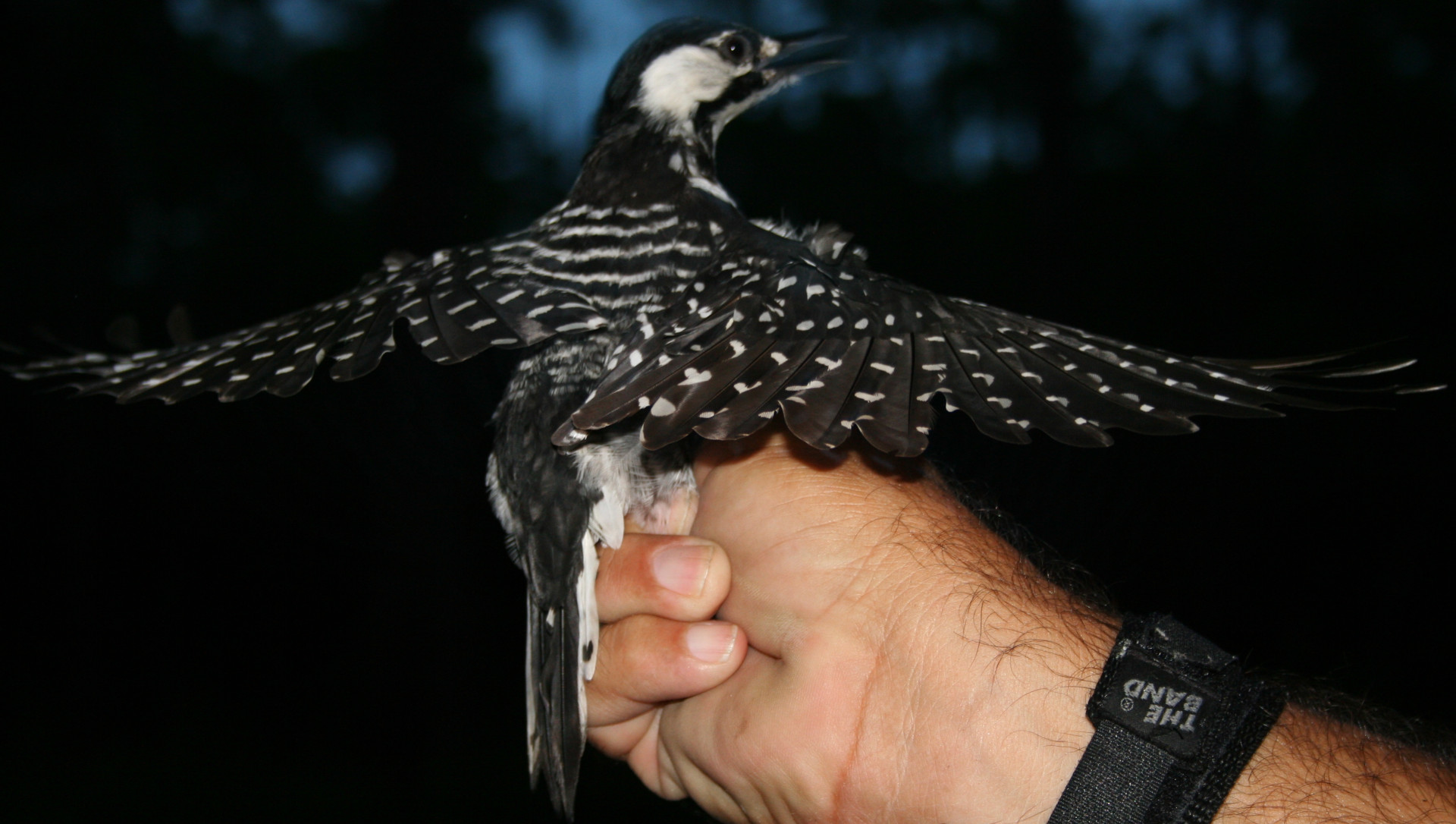
You two are an amazing team! I’ve just spent some glorious time catching up on your posts (missed while Tom and I were away from easy internet access)… and have absolutely loved both Carrie’s text and Chuck’s photos. We sure do hope (and plan) to see you in Newfoundland… meanwhile, thanks for continuing to share your incredible trip with us… 🙂 C
Glad to hear from you. Been wondering if you were in Alaska yet. Keep up the wonderful writing. It is a pleasure to read!